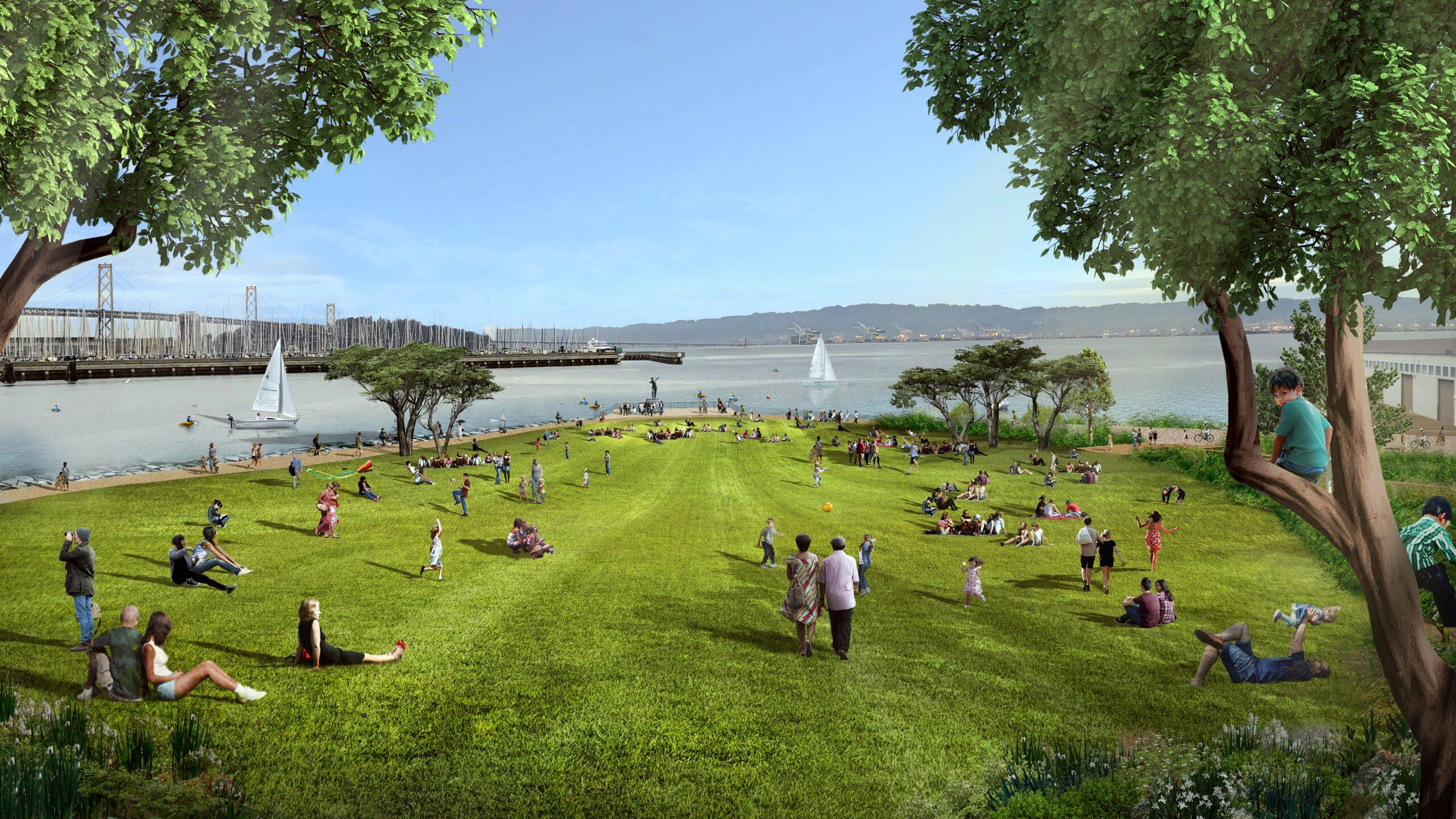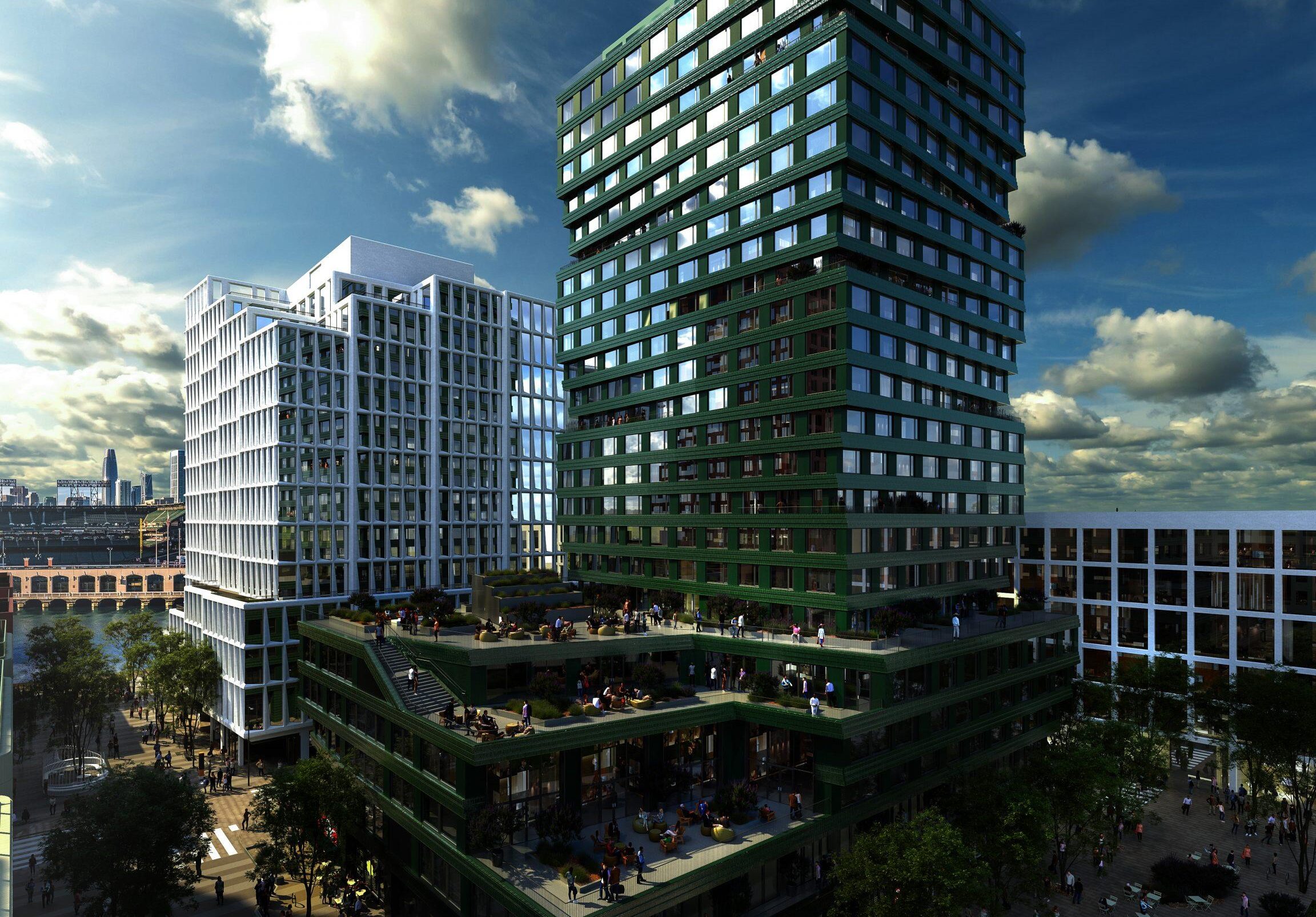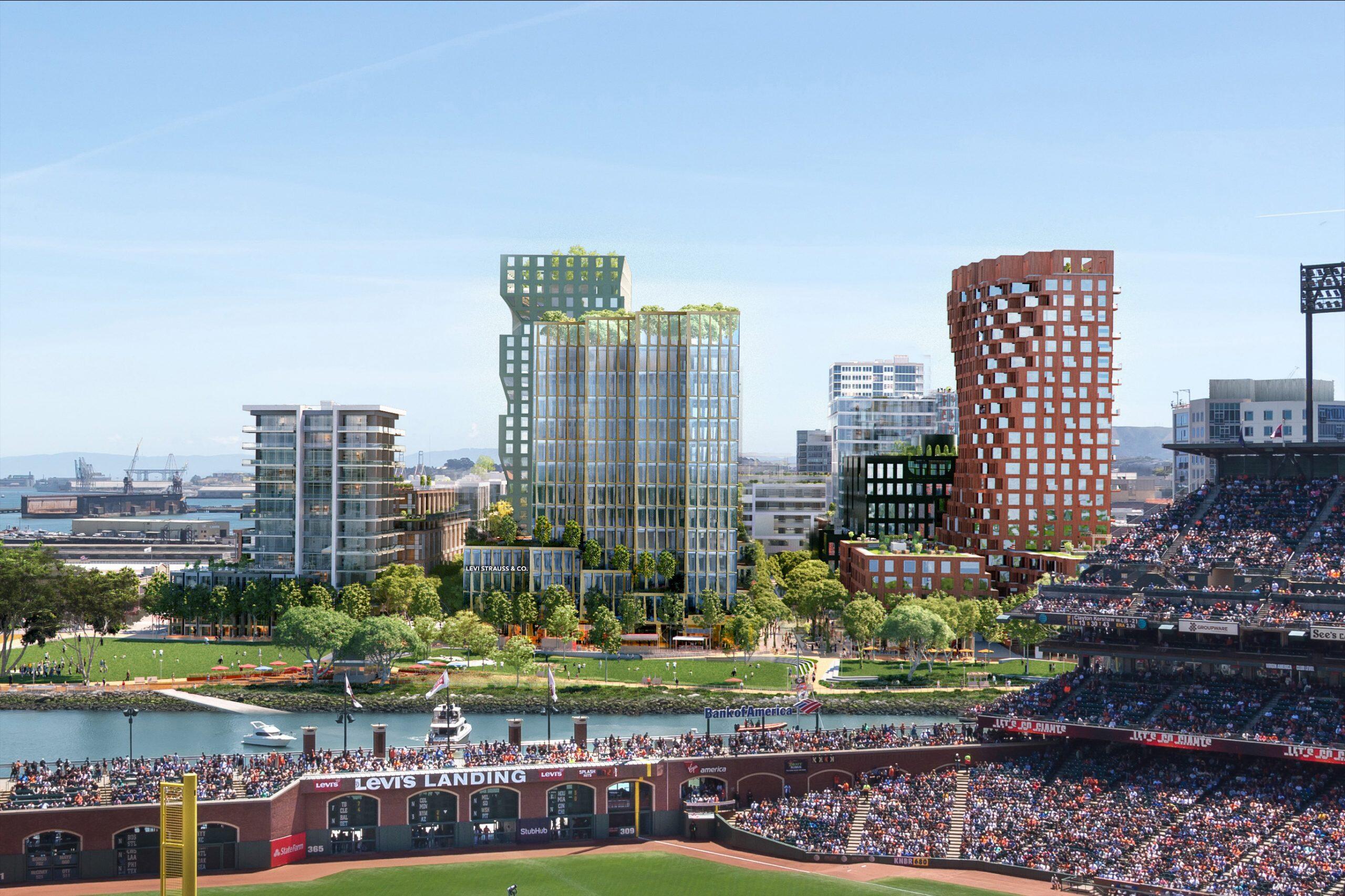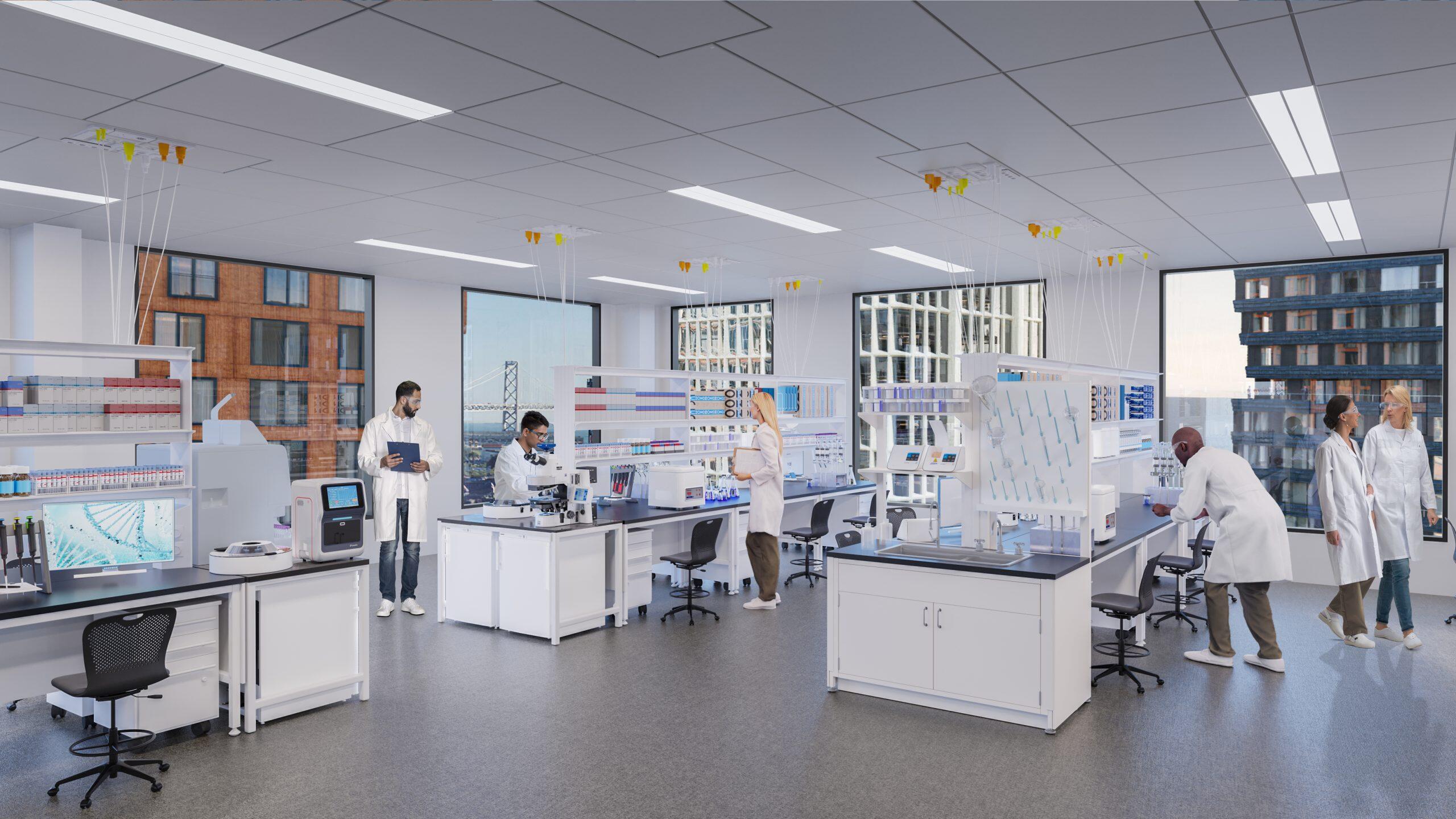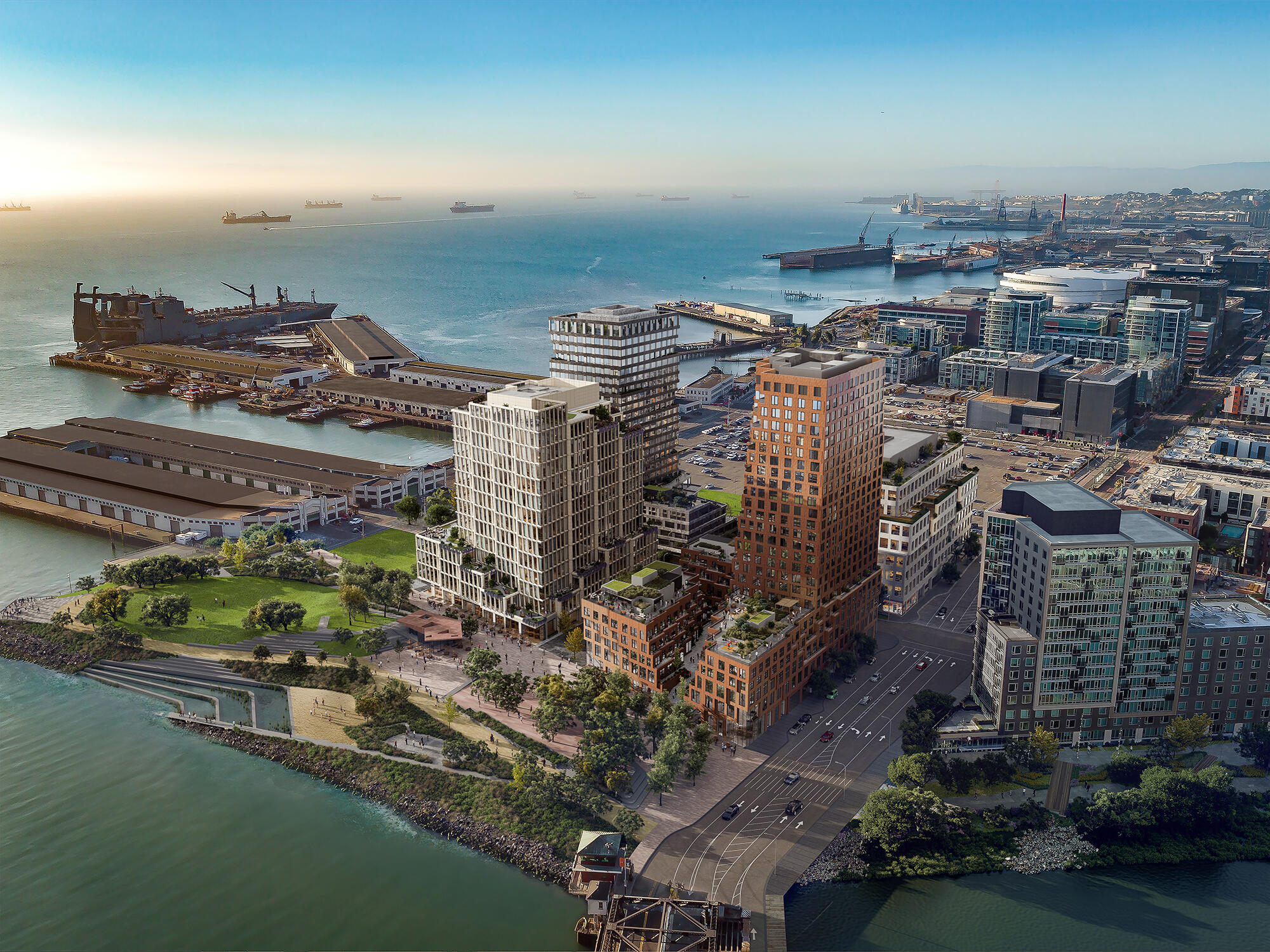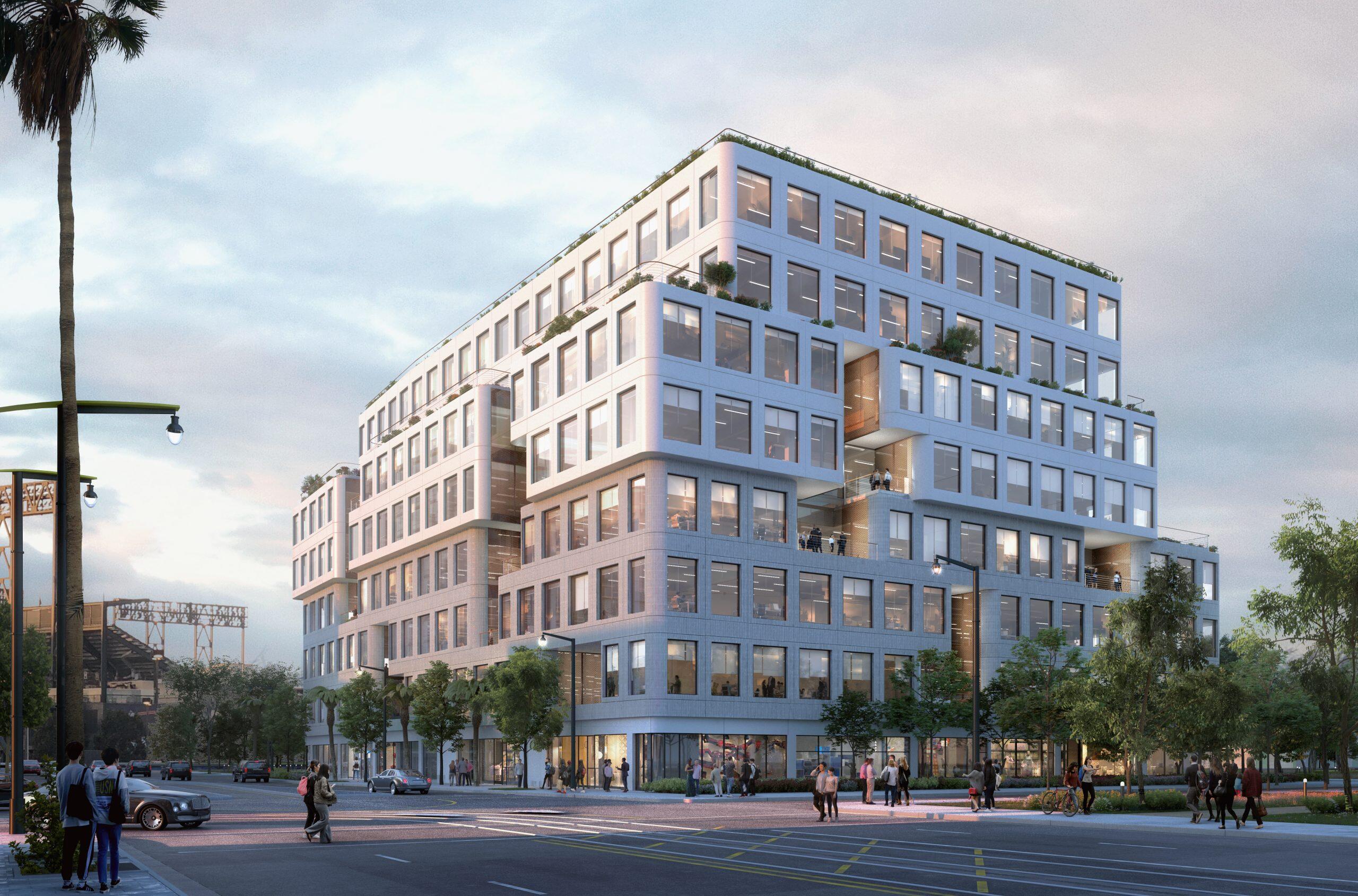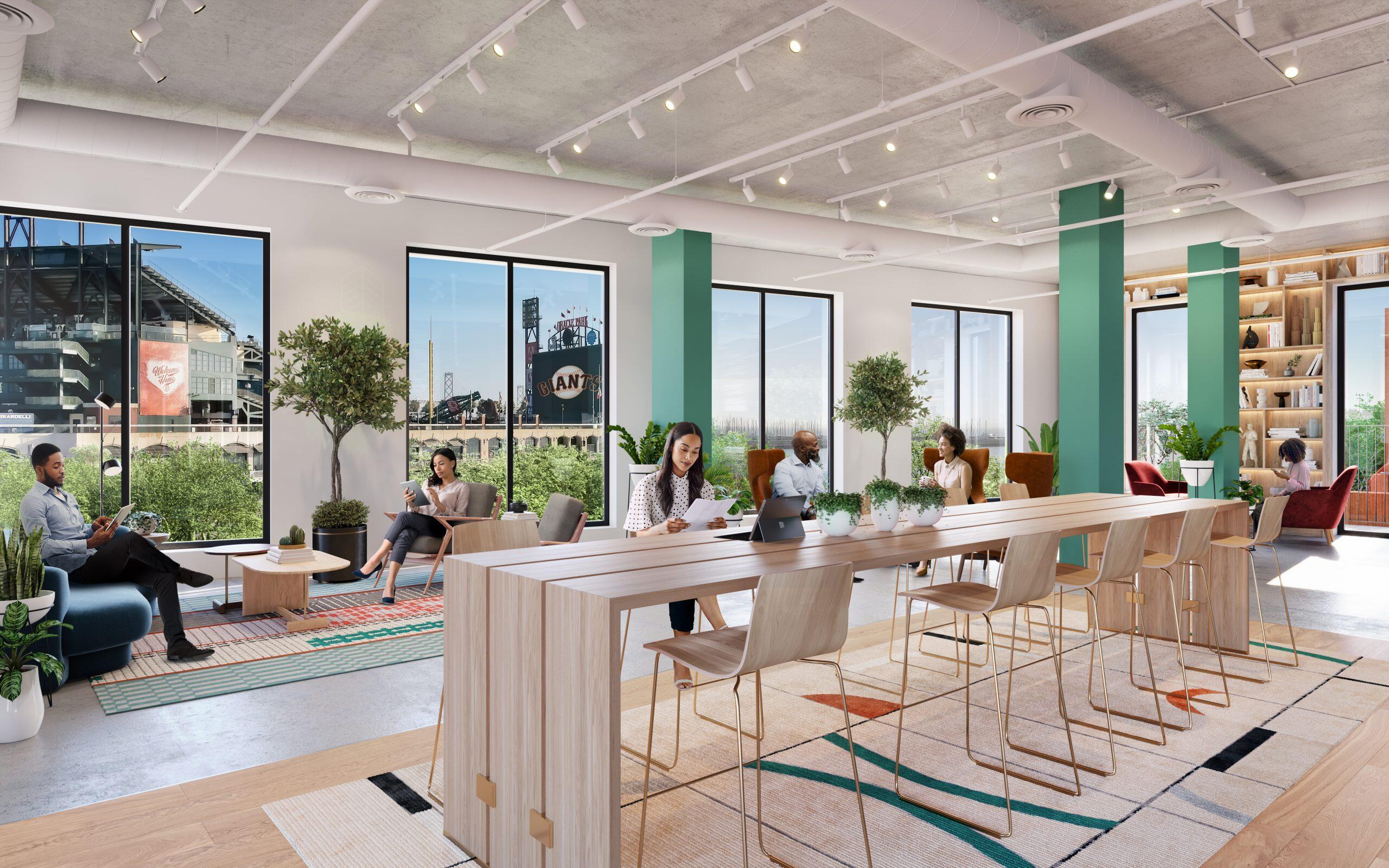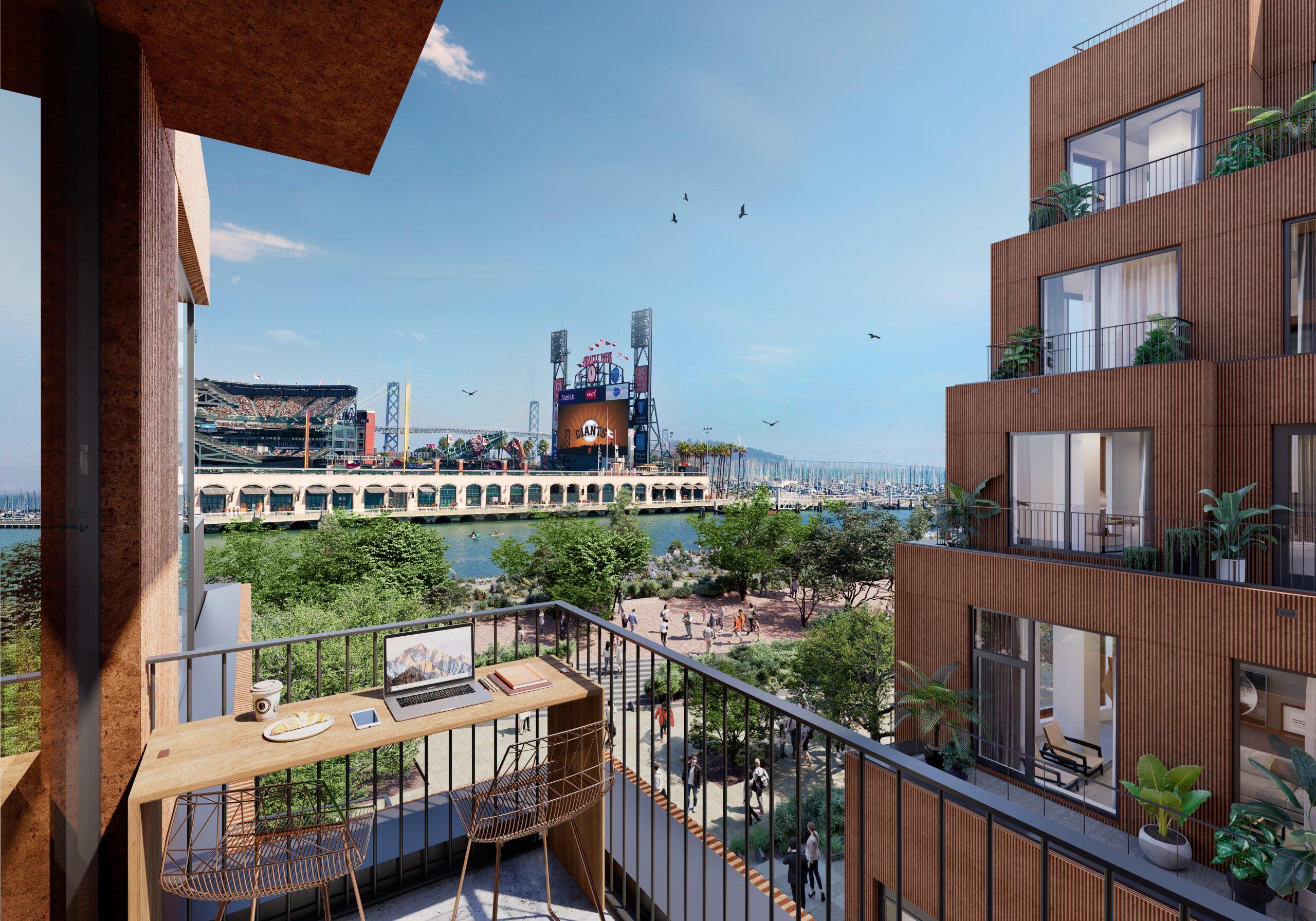The City and County of San Francisco is welcoming an exciting new development as the first phase of Mission Rock nears completion, ready to greet residents, retailers and tenants in the second quarter of 2023. A collaboration between the San Francisco Giants, the Port of San Francisco and renowned developer Tishman Speyer, Mission Rock will be the city’s largest mixed-use waterfront neighborhood.
The product of more than 15 years of collaboration, the project has been anchored in a public/private partnership that is committed to pushing the boundaries to serve the San Francisco community as it sets new standards for sustainability.
“A spirit of collaboration is ingrained in the cultural fabric of how we, the Port and the Giants have worked together,” says Senior Managing Director Carl Shannon, who oversees Tishman Speyer’s portfolio in the San Francisco Bay Area and the Pacific Northwest. “We have a commitment to excellence in all of our endeavors, and Mission Rock will be a long-term economic asset to the City and Port, enhancing our inclusive community and embracing cutting-edge environmental principles.”
The Giants chose to work with Tishman Speyer on this landmark project because of its excellent track record in San Francisco of navigating large, complex projects that have been both an economic and community success. “We selected Tishman Speyer as our partner for Mission Rock because of our shared values around what it means to create a vibrant and inclusive waterfront neighborhood,” says Larry Baer, President and CEO of the San Francisco Giants. Those values – which include community and collaboration — guide each decision we make as we build this project together.”
“I can’t think of a firm that’s better at execution than Tishman Speyer, which was vital given the level of ambition we established early on with the Port and City,” says Julian Pancoast, Vice President of Development for the San Francisco Giants. “They are a disciplined and thoughtful partner who has helped us identify new, progressive ways to achieve our collective vision.”
The project was an ideal fit for Tishman Speyer for numerous reasons, agrees Maggie Kadin, the firm’s Managing Director of Development. “The Giants, Port and City are very in tune with community needs as they advance a critical mission to create dynamic spaces that are open and welcoming to all of our neighbors,” she says. “While this project complements our existing skill sets, we also learned so much from this amazing partnership which we have spread throughout Tishman Speyer.”
Diversity Builds a Stronger Community
The commitment to inclusivity will be reflected in the retail space of which the majority are expected to be local retailers. “We are putting together a collection of tenants of varying sizes and backgrounds who will help us create a neighborhood that is by and for San Francisco, that offers a sense of place and authenticity,” Pancoast said. He anticipates the majority of those occupying the 200,000 square feet of retail space will be either minority- or women-owned businesses.
The local tie was also important throughout the design and construction process as they made a concerted effort to attract women- and minority-owned businesses. The tone was set early when four of the initial five design architects selected had female design principals. “It’s a testament to where the top talent is in the marketplace,” Kadin says. “Our mission was to select the best talent through a robust interviewing process, and the winning candidates happened to include four amazingly talented female design principals.”
Throughout the process, the partners worked with smaller local businesses to ensure they had opportunities that had been lacking in the past. That entailed everything from finding solutions that help firms obtain insurance to breaking contracts apart. “There were companies who didn’t have the necessary experience to handle the entire project so we helped them devise an exceptional proposal for the piece where they have expertise,” says Shannon. Many subcontractors were able to parlay that first engagement into repeat business.
They also developed a training program that helped prepare women for construction jobs. To that end they hosted the program for an all-women cohort, then engaged the general contractors to find roles on-site for those who completed the training as they worked to foster successful careers.
“We realized we had to demonstrate it is a career that is conducive and comfortable for women so we thought holistically about how to overcome barriers like childcare and perceived physical conditions, right down to ensuring they had a clean restroom on the construction site,” Kadin says. Given the remarkable feedback, they hope it inspires others to consider how they can forge a better work environment to similarly attract a more diverse workforce.
And just as important, the housing will also consist of a mix of residents, with 40% of the project devoted to affordable housing. While that number is noteworthy, Pancoast underscores that the affordable housing component isn’t the only way to include diverse residents, as the project will have a wide variety of types of units suitable for a range of household types.
“For a truly diverse and inclusive community that brings different types of people together, we needed to address the ‘missing middle,’” he says.
The long-term targets are just as exciting, with the next phase offering 24 units of housing to serve youth transitioning out of foster care.
The commercial portion of the first phase of the project includes Visa’s new world headquarters and a purpose-built, state-of-the-art life sciences lab building.
Innovating to Achieve Lofty ESG goals
One of the key differentiators is how Mission Rock approaches ESG from a holistic perspective. “Sustainability was top of mind in this project – not just in selected attributes, but throughout,” Kadin says.
As one groundbreaking example, the community will have its own district-scale utilities – a District Energy System (DES) and district-scale blackwater treatment plant. The DES was designed to leverage the scale and diversity of uses within Mission Rock, using a shared energy plant that will supply hot and cold water to the development through a network of underground pipes and is designed to ultimately utilize a bay water exchange system to meet heating and cooling needs in an upcoming future phase of construction.
With cost-based rates, it will operate as a nonprofit. Pancoast cites it as evidence of the public/private partnership that is woven throughout Mission Rock. “The City has defined policy goals related to energy use, and DES helps us support them.” In addition, the project will use 100% greenhouse gas-free Hetch Hetchy Power provided by the San Francisco Public Utilities Commission.
Mission Rock also preserves water resources as it boasts the largest private blackwater treatment plant in California delivered, which will recycle project wastewater to meet 100% of non-potable water demand for functions like irrigation for the new parks and open spaces, and toilet flushing.
“We chose an aggressive target upfront that was rooted in San Francisco values,” Pancoast says. “Anywhere we can legally use recycled water on site, we do,” he says, adding that it was an excellent example of how Tishman Speyer was able to execute what appeared to be insurmountable feats. “We had initially intended to utilize greywater, but the team conducted a complex discovery process and determined that blackwater was actually a more efficient way to deliver on our objectives.”
As with all elements of the project, the team has been future-focused, sizing the water treatment plant and DES to accommodate neighborhood growth.
“We had a responsibility to build a project that’s state-of-the-art from a sustainability perspective,” says Shannon. “Every decision we made – from the blackwater treatment plant to ensuring the site was raised five feet to lift it from the long-term flood plain – was intended to set a higher bar from an environmental standpoint.”
Yet these large gains don’t come at the expense of smaller ones, Kadin notes. For example, the residential units offer ample bike parking and easy access to transit to reduce dependence on cars. The Mission Rock Partnership even reevaluated the approach to the most basic features, for example, using induction stoves rather than gas cooktops. “Every decision we made was through the lens of building for the future, while also delivering a superior product for our customers today,” she says.
A “Beacon” of What San Francisco Can Be
These buildings will be staples of the San Francisco skyline forever, notes Shannon. “We are creating a neighborhood that all of the city can be proud of, that promotes new standards for ESG.”
Pancoast agrees that its impact will be felt for generations. “We are demonstrating what is possible with a partner like Tishman Speyer who was equally committed to a project that established ambitious goals and is now delivering on them. With thoughtful, dedicated people focused on achieving the impossible, you can push the industry forward,” he says. “We are incredibly proud of the way Mission Rock will reflect the values of the community we are serving.”



